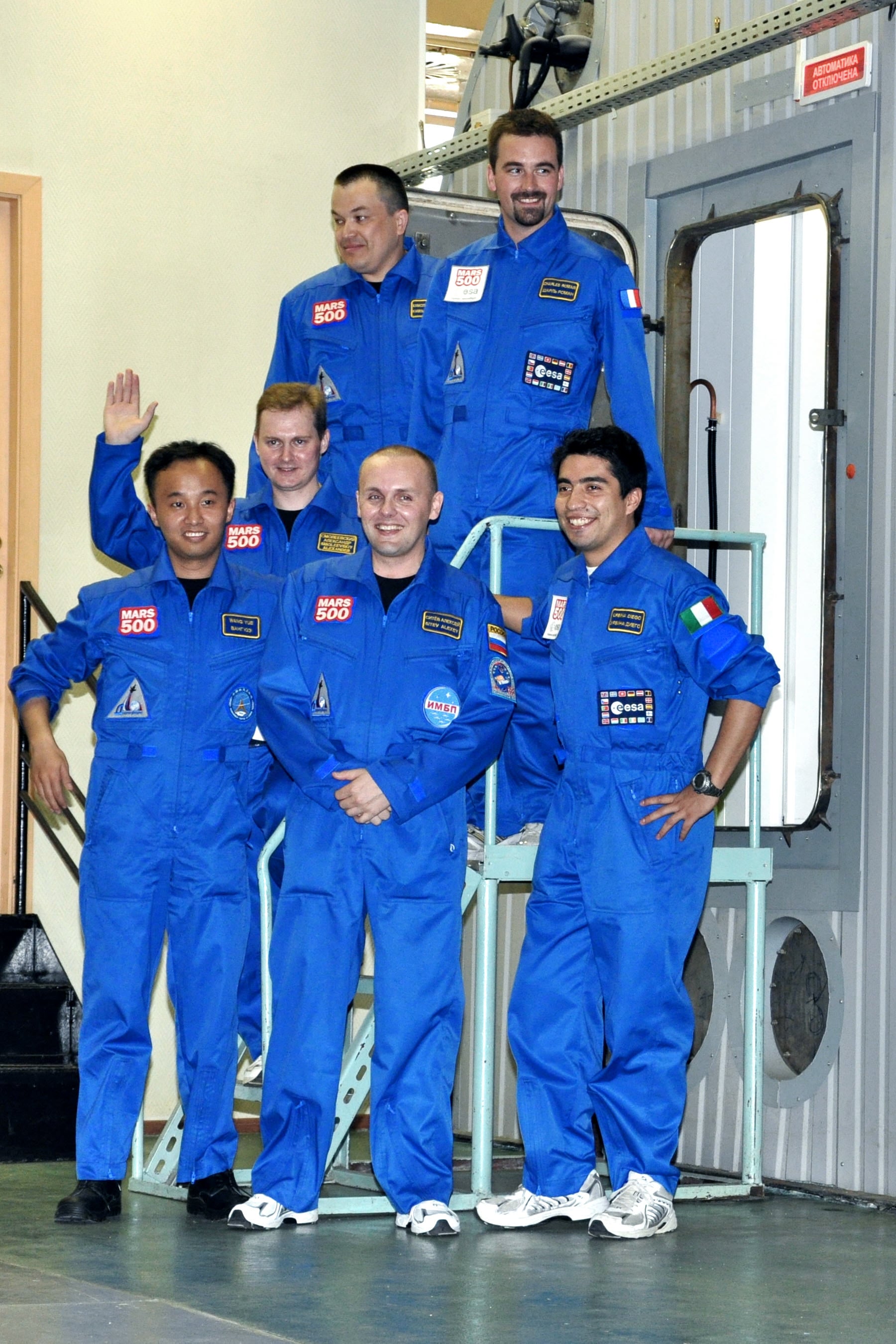[/caption]
Six men from Europe, Russia and China on a 520-day mock mission to Mars, have now reached the point in their mission where they have arrived 'in orbit' of Mars. Mars500, the first full-duration simulation, is like a real Mars mission, where the crew has been in isolation, living and working like astronauts, eating special food and exercising the same way as crews aboard the International Space Station, and even experiencing lag time in communications. Now after 244 days of virtual interplanetary flight, the crew is getting ready to 'land' on Mars on February 12 where they will make three EVAs onto simulated Martian terrain.
Mars500 is not a just a flight of fancy or fantasy, but scientists from Russia and the European Space agency say it is a "pioneering international study of the complex psychological and technical issues that must be tackled for long spaceflights."
[caption id="attachment_65747" align="aligncenter" width="386" caption="Mars500 crew just seconds before ingressing their module for a 520 day stay in June 2010. Credit: ESA"]
[/caption]
The simulation has been running for more than eight months in hermetically sealed modules imitating a Mars spacecraft at the Institute of Biomedical Problems (IBMP) in Moscow.
"Mars500 is a visionary experiment," said Simonetta Di Pippo, ESA Director for Human Spaceflight. "Europe is getting ready to make a step further in space exploration: our technology and our science grow stronger every day. Mars 500 today is only an enriching simulation, but we are working to make it real."
[caption id="" align="alignnone" width="580" caption="The Mars500 facility has no windows, but a laptop running Celestia, a freeware space simulation software, acts as a virtual window as the crew approached the Red Planet. Credits: ESA"]
[/caption]
The crew has now opened a hatch between the mothership and the mockup of a lander that, according to script, was launched separately to Mars.
In the coming days, the cargo inside the 'lander' will be transferred into the habitat and the lander will be prepared for 'undocking' and 'landing'.
The crew will then divide: Russian Alexandr Smoleevskiy, Italian Diego Urbina and Chinese Wang Yue will enter the lander, while the rest of the crew, Romain Charles from France and Sukhrob Kamolov and Alexey Sitev from Russia 'remain in orbit'.
The hatch between the interplanetary spacecraft and lander will be closed on 8 February. The lander will undock and 'touch down' on Mars on 12 February.
[caption id="" align="alignnone" width="650" caption="The Mars terrain simulator of the Mars500 facility. The crew will drive a rover and place sensors during their sorties. Credits: IBMP/ Oleg Voloshin"]
[/caption]
The simulated Martian terrain is actually housed in a large hall alongside the Mars500 modules. The first EVA will take place on February 14, with subsequent sorties taking place on February 18 and 22.
Then the lander will return to orbit and dock with the mothership the following day.
The lander crew will stay in quarantine for three days before the hatch is opened on 27 February and the astronauts are reunited.
[caption id="" align="alignnone" width="580" caption="Mars500 participant Diego Urbina with a computer simulation in the Mars500 facility. Credits: ESA"]
[/caption]
After that, the crew is faced with another long, monotonous 'interplanetary cruise' before arriving home in early November 2011.
Source:
ESA
 Universe Today
Universe Today
